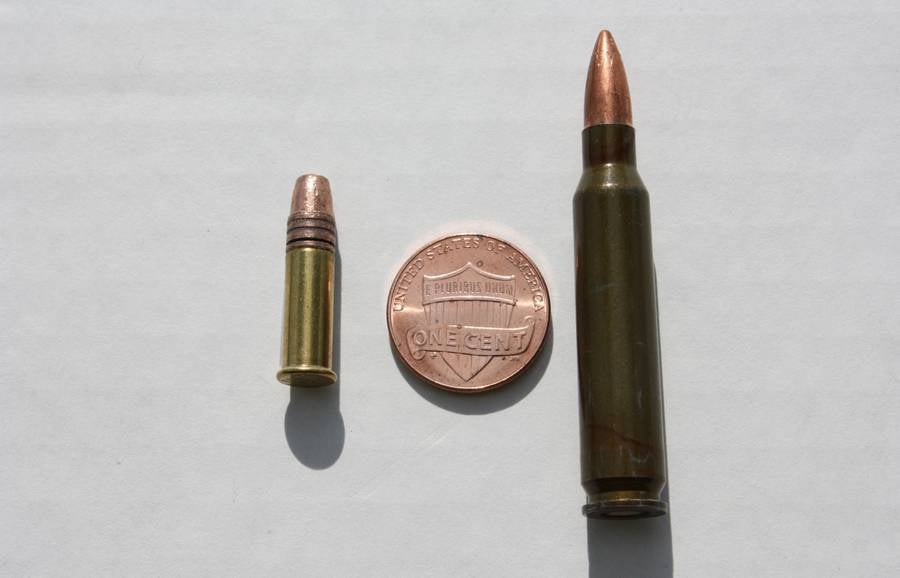Exit_Wound
New member
Hey there sports fans!
So, I need some help with my first long gun!
I don't quite understand the difference in calibers. I am quite comfortable with handgun cartridges, and understand the considerations for selecting them.
I just can't seem to grasp long guns! I think the naming conventions are throwing me off.
For example:
1. Why is it that a .223 has so much more respect than a .22lr?! Are the bullets not relatively the same size?
2. What does .30 caliber mean? Does this include .308? 30-06? 30-30?
3. What is a good versatile hunting round?
4. What is a good tactical round?
Also, why are AR-15 rifles so popular given that they are chambered for a relatively small round? (That question -well, this entire post- could be a testament to my ignorance)
Thanks for your help!
So, I need some help with my first long gun!
I don't quite understand the difference in calibers. I am quite comfortable with handgun cartridges, and understand the considerations for selecting them.
I just can't seem to grasp long guns! I think the naming conventions are throwing me off.
For example:
1. Why is it that a .223 has so much more respect than a .22lr?! Are the bullets not relatively the same size?
2. What does .30 caliber mean? Does this include .308? 30-06? 30-30?
3. What is a good versatile hunting round?
4. What is a good tactical round?
Also, why are AR-15 rifles so popular given that they are chambered for a relatively small round? (That question -well, this entire post- could be a testament to my ignorance)
Thanks for your help!

